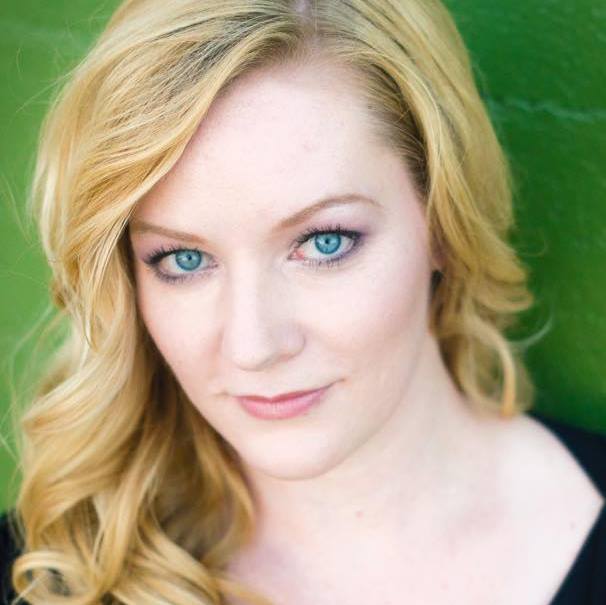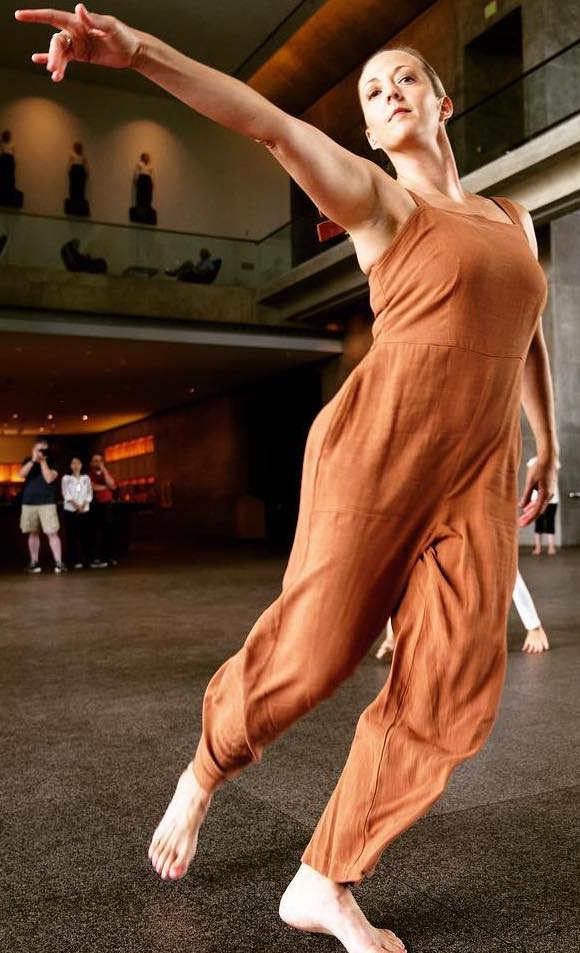
I recently spoke with two dance faculty members about their transition to online education. Dr. Ali Duffy is an Associate Professor of Dance and an administrator for the new MA in Dance. Kyla Olson is an Assistant Professor of Practice and also serves as the faculty advisor for Dancers with Soul (a hip-hop dance student organization) and University Dance Company (dancers who perform in faculty/guest artist works featured in DanceTech).
 Duffy was recently awarded the 2020 William D. Kerns Performing Arts Award presented
by LHUCA for her work as founder and artistic director of Flatlands Dance Theatre
and a President's Excellence in Teaching Professorship at Texas Tech.
Duffy was recently awarded the 2020 William D. Kerns Performing Arts Award presented
by LHUCA for her work as founder and artistic director of Flatlands Dance Theatre
and a President's Excellence in Teaching Professorship at Texas Tech.
"I direct, choreograph, and perform in two evening-length Flatlands Dance Theatre productions and multiple community engagement performances, and publish scholarly research," said Duffy of her current work. "Much of my creative output involves collaboration across disciplines. For example, right now, I'm working with transmedia artist Jiawei Gong, poet John Poch, and three composers from the School of Music and the Frontier Arts Society on new interdisciplinary works. I also co-advise XTE, the dance student honors and service organization."
Olson typically choreographs the TTU musicals as well, and recently had great success with this semester's DanceTech, for which she served as the Artistic Director.
"I created a work titled you can't rewrite the past | change is coming, which explored the impending disaster of climate change and featured a beautiful sphere sculpture by local artist Jon Whitfill," said Olson. "This was the first time DanceTech was performed in the new Black Box Theatre, and was also (unfortunately) our last production performed this season. I was familiar with the Black Box already; I had the lovely opportunity to work with Dr. Jonathan Marks on our first production in that venue, Doctor Love. I love finding ways to bring dance and theatre together because we have so much we can learn from one another."
For our dance faculty, the nature of online classes and working from home has posed challenges. However, they're doing their best to look at the brighter side of things.
"I've gotten to teach my favorite class, Musical Stage Dance," said Olson. "Other than that, I have two different levels of jazz dance technique courses. All of those have been synchronous classes, which I love because I get to see my students' faces. Teaching dance technique and choreography online have certainly not been easy, but I am so proud of what my students have been able to achieve through this process. While I certainly appreciate the technology we have to do these types of classes online, it doesn't replicate the experience we share in the studio."
The final course Olson teaches is Dance in the Community, which is co-taught with Abby Chowning and PhD student Evangeline Jimenez.The online version of this course sees Olson's students creating digital lessons for the agencies they were serving in person before the shift online.
"The students are being quite creative in making their original lesson plans transfer over digitally," said Olson. "They have found inventive ways to collaborate with one another to impact the community agencies they led out to serve this semester. We are quite proud of their willingness to give back to our community while staying home."
Duffy teaches Choreography II, Pedagogy, Dance Appreciation, and an honors course. She chose a slightly different approach regarding her approach to online education.
"I chose to make all of my courses asynchronous for the remainder of the semester because I know how much pressure everyone is under right now, and how much of a learning curve online learning can present students," said Duffy. "During this challenging time, I'm trying my best to support students' learning while, at the same time, acknowledging the gravity of situation we are in as a global community. I hope I am creating space for my students (and myself) to be vulnerable within the context of this particular semester and this set of circumstances with which we must adapt."
Both Duffy and Olson regularly use Zoom for basic class needs, as well as sharing helpful videos on YouTube and utilizing BlackBoard for assignment submissions. For Olson, the availability and ease of use of technology has made the process less painful. Duffy expressed concern for her colleagues, however.
"I happened to not be teaching any technique courses this spring, so my task was made a bit easier in that regard. My colleagues who are teaching dance technique this semester have endured the bulk of the difficulty in transitioning to an online modality. They've done a fantastic job of moving their technique teaching online and they are mastering the art of demonstrating movement in their kitchens, delivering feedback through recorded videos, and creating both synchronous and asynchronous content. This is by no means the way of the future for dance, but we are doing the best with what we have available to us," said Duffy.
As someone with a heavy technique-based course load, Olson echoed Duffy's concerns.
"Dance is such a personal and kinesthetic experience that doesn't translates to the online world. I can't see my students' bodies or give them specific corrections, nor can I keep them safe from injuring themselves by dancing in remote space with unknown circumstances. They can't always see me demonstrate movement details through video. They aren't hearing or seeing me without a slight delay. There are so many distractions that we typically would not have in the studio or classroom, and it has created some problematic situations for everyone. Most of my students learn dance visually, and they don't all have equal access to technology, internet, or space."
These worries aside, Olson and Duffy agree that most of our anxiety comes not from the state of our online classes, but the state of the world.
"This virus and quarantine have had such a huge impact on everyone, and it's going to change everything for us," said Olson. "I think it's going to have a substantial impact on the arts community, and I hope we can find a way to get to back to our craft in the studio and on the stage."
